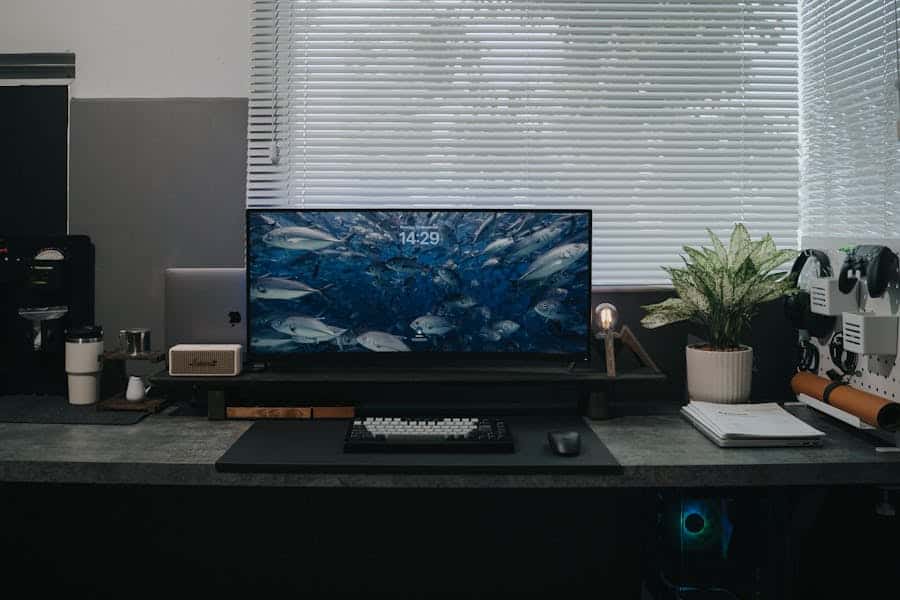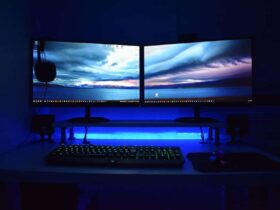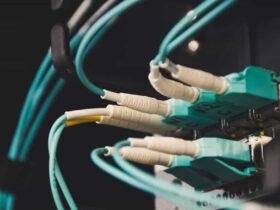In the dynamic landscape of modern technology, monitors have evolved far beyond their traditional role as mere display screens. A notable feature that marks this evolution is the inclusion of USB ports—a development that might seem curious at first glance. “Why Do Monitors Have USB Ports?” delves into this intriguing question, uncovering the practicality and innovation behind this design choice. This feature not only enhances connectivity and convenience but also transforms monitors into versatile hubs, catering to the needs of a tech-savvy generation. As we explore the multifaceted benefits of USB-equipped monitors, from streamlined workspaces to improved device integration, it becomes clear why this trend is not just a fad but a significant leap forward in computer technology.
What Purpose Do USB Ports On Monitors Serve?
The integration of USB ports on monitors serves a multifaceted purpose, designed with the user’s convenience and efficiency in mind. At its core, the primary function of these ports is to provide a straightforward and accessible means for connecting a wide array of peripherals directly to the monitor.
This direct connection strategy eliminates the common hassle of stretching cables to reach the computer’s USB ports, which are often inconveniently located either at the back of the CPU or on the sides of laptops. By having these ports within easy reach on the monitor, users can effortlessly plug in essential devices such as keyboards, mice, and webcams, thereby enhancing the ergonomic setup of their workspace.
Moreover, these USB ports transform the monitor into an effective USB hub, significantly expanding the user’s connectivity options. This is particularly beneficial for individuals working with devices that offer a limited number of USB ports.
By connecting a single USB cable from the computer to the monitor, users effectively gain access to additional ports, simultaneously facilitating the connection of multiple devices. This capability not only augments productivity but also contributes to a tidier and more organized workspace by minimizing cable clutter.
Including USB ports on monitors is a testament to the evolving landscape of technology, where user convenience and workspace optimization are paramount. Through this innovative feature, monitors are no longer just visual output devices but have become central hubs that accommodate the dynamic needs of users in both professional and personal computing environments.
How Do USB Ports On Monitors Improve Connectivity?
USB ports on monitors significantly enhance connectivity by transforming the monitor into a versatile hub for various devices. This feature streamlines the connection process, making it more efficient and user-friendly.
Simplified Device Management:
With USB ports on the monitor, users can easily manage multiple devices, such as external hard drives and printers, directly from their workstation, improving productivity.
Enhanced Peripheral Connectivity:
Monitors with USB ports allow for the direct connection of peripherals like keyboards and mice, reducing desk clutter and cable management hassles.
Quick Access To Data Transfer:
USB ports facilitate fast data transfers between devices, such as flash drives and cameras, directly through the monitor, speeding up workflow.
Streamlined Charging Solutions:
Some monitors offer USB ports that can charge devices, eliminating the need for additional power outlets and keeping the workspace tidy.
Future-Proof Workspace:
By accommodating a range of devices through USB connectivity, monitors with USB ports ensure a future-proof setup, ready for new technologies and devices.
What Types Of USB Ports Are Commonly Found On Monitors?
Monitors today come equipped with various types of USB ports, each designed to cater to different functionalities and connectivity needs. The most commonly found USB ports on monitors include:
USB-A Ports
USB-A ports are the standard USB ports that most people are familiar with. They are typically used for connecting a wide range of peripherals such as keyboards, mice, external hard drives, and flash drives. These ports support USB 2.0, USB 3.0 (USB 3.1 Gen 1), and USB 3.1 (USB 3.1 Gen 2) standards, offering varying data transfer speeds.
USB-B Ports
USB-B ports are less commonly found on monitors but are crucial for connecting the monitor itself to a computer as a USB hub. This connection allows the USB-A ports on the monitor to function by linking the monitor’s hub to the computer, facilitating data transfer and peripheral connectivity.
USB-C Ports
USB-C ports are increasingly becoming standard on newer monitors due to their versatility. They support data transfer, video signal transmission, and power delivery over a single cable. This means you can charge your laptop, connect peripherals, and display video from your computer to your monitor all through one USB-C connection, simplifying the setup and reducing cable clutter.
Thunderbolt 3 Ports
Some high-end monitors also include Thunderbolt 3 ports, which use the same connector as USB-C. These ports offer even higher data transfer rates, up to 40 Gbps, and can daisy-chain multiple devices through a single connection. Thunderbolt 3 ports can also deliver up to 100W of power, enough to charge most laptops and support two 4K displays or one 8K display.
Each of these USB port types enhances the functionality and versatility of monitors, catering to various user needs from basic peripheral connectivity to high-speed data transfer and efficient power delivery.
Why Is The Trend Of Including USB Ports In Monitors Growing?
The trend of including USB ports in monitors is growing due to several compelling reasons:
- Enhanced User Convenience: USB ports directly on monitors offer easy access for connecting peripherals, improving the user experience by reducing the need to reach around a computer to plug in devices.
- Workspace Optimization: By serving as a USB hub, monitors with USB ports help create a cleaner, more organized desk space, minimizing cable clutter.
- Increased Connectivity Options: These ports expand the number of devices that can be connected simultaneously, catering to users with multiple peripherals.
- Support For Modern Devices: With the inclusion of USB-C and Thunderbolt 3 ports, monitors are now capable of charging devices and transferring data at high speeds, making them more versatile.
- Streamlined Power Solutions: Some monitors with USB-C ports can charge laptops or mobile devices, reducing the need for additional power adapters and cables.
- Future-Proofing Workspaces: As technology evolves, having multiple USB ports ensures compatibility with a wide range of devices, both current and future.
- Enhanced Productivity: Direct connection to monitors facilitates a quicker setup of workstations, leading to improved efficiency and productivity.
- All-In-One Solutions: Monitors with USB ports often integrate other features like speakers and webcams, offering an all-in-one solution for workspace technology needs.
This growing trend reflects a shift towards more integrated, user-friendly, and efficient computing environments, catering to the needs of both professional and casual users.
Conclusion
In conclusion, the inclusion of USB ports in monitors represents a significant advancement in computer technology, offering users a multitude of benefits. These ports serve as convenient hubs for connecting peripherals, streamlining workflows, and decluttering workspaces. With the ability to charge devices, transfer data at high speeds, and support a wide range of devices, monitors with USB ports epitomize versatility and efficiency. As the demand for seamless connectivity and enhanced productivity continues to rise, this trend is poised to become the new standard in monitor design. Embracing this innovation ensures that users stay ahead in the ever-evolving digital landscape, equipped with tools that empower creativity, collaboration, and seamless integration across devices.
FAQ’s
Why Are USB Ports On Monitors?
USB ports on monitors serve to enhance connectivity and convenience by allowing users to easily connect peripherals such as keyboards, mice, and external storage devices directly to the monitor.
How Do I Use The USB Ports On My Monitor?
To use the USB ports on your monitor, simply plug in your peripheral devices such as keyboards, mice, or USB flash drives into the available ports on the monitor. Your computer should recognize these devices as if they were connected directly to its USB ports.
What Are The USB Ports On The Side Of A Monitor For?
The USB ports on the side of a monitor serve the same purpose as those on the back or bottom—providing a convenient location to connect peripheral devices. They offer easy access for plugging in devices without having to reach around the back of the monitor or the computer.

























Leave a Reply